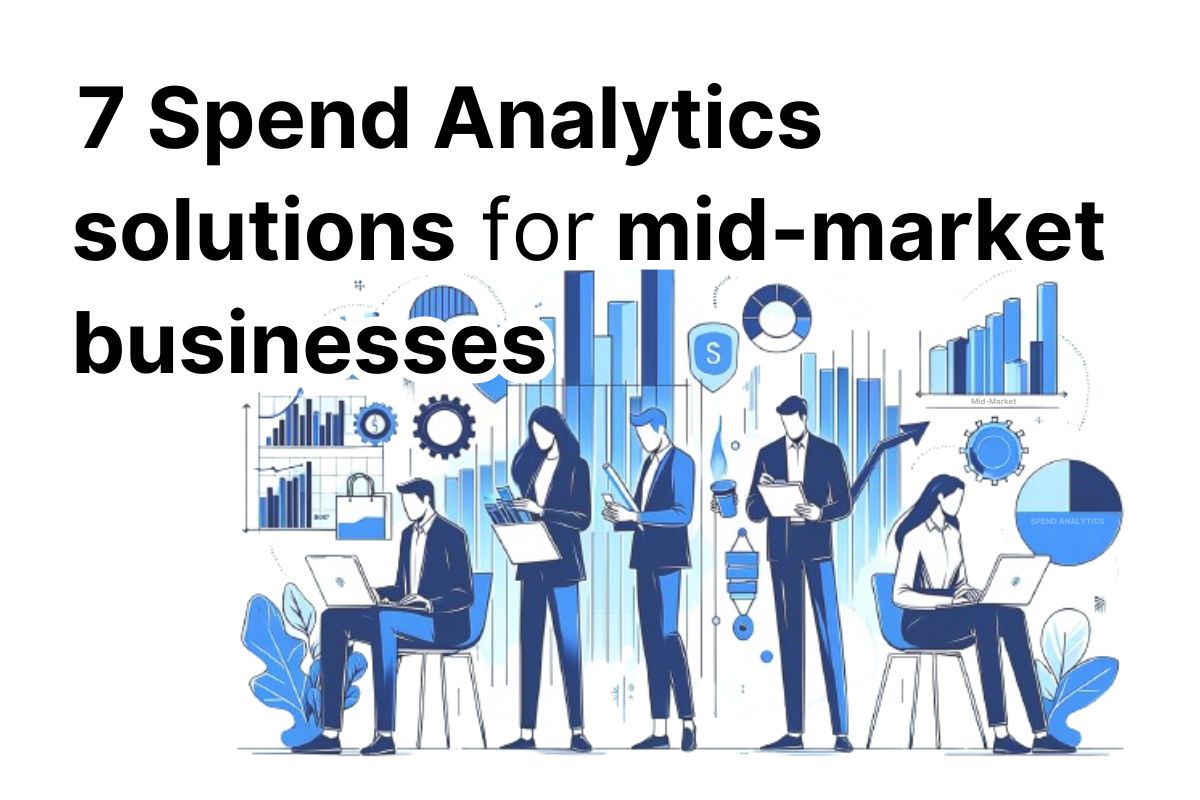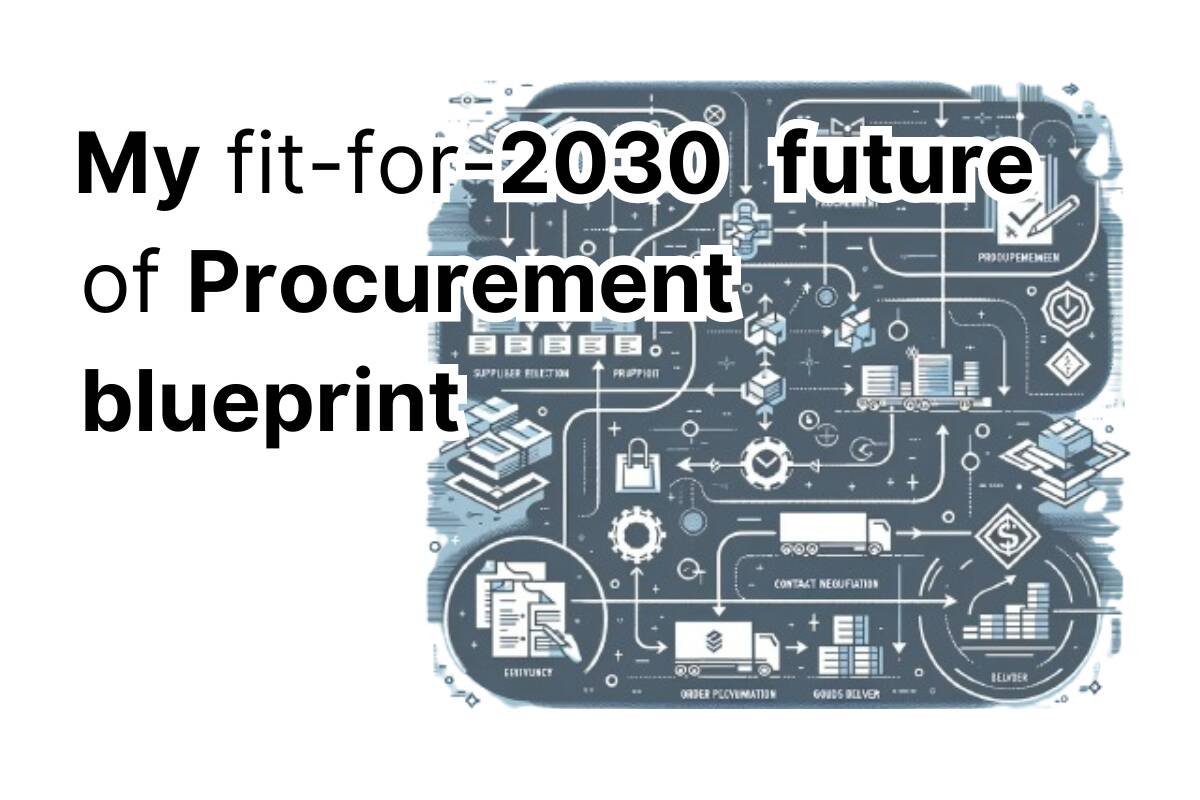What are the major differences between running your procurement operations in ERP, S2P suites or a best-of-breed digital procurement tools?
For folks like me, who are deeply involved in the procurement tech space, the answer is clear.
However, to anyone who’s just getting started on this topic, the terminology may be confusing. You may be aware that they’re different. But perhaps you don’t really understand how that impacts your sourcing decision when seeking out the best procurement software for your organisation.
Don’t worry, we’ve got you covered. And we’ll keep it simple. No consultant-speak I promise.
How is ERP different to a source-to-pay suite?
Let’s start with this scenario. Unless you’re issuing manual POs through Word or Excel, your default position in procurement is most likely using your ERP system. ERP stands for Enterprise Resource Planning.
This could be SAP or Oracle if you’re in a large organisation, right the way through to more finance-oriented systems such as NetSuite or Sage if you’re in a mid-sized business.
Cloud-based ERPs are slowly taking over on-premise ERPs, as is evidenced by SAP’s push to get everyone off on-premise ECC and onto cloud S4-HANA. Nonetheless, this is a long game. Major ERP implementations are massive, expensive IT projects. This won’t happen overnight. On-premise ERP systems, with all their disadvantages, will be around for a while.
ERP systems are also typically not user-friendly. You’re likely to require extensive training if you want to use them for more than just a few basic transactions. This is especially the case for reporting capabilities.
If your organisation doesn’t invest in its people or its training efforts, your ERP system will likely feel like a mysterious black box.
Because ERPs are designed for the whole enterprise, Procurement was a bit of an afterthought. It’s not easy to run procurement entirely through ERP. These systems have little procurement-related functionality beyond day-to-day transactional purchasing and tactical sourcing.
This is usually adequate – although not great – for managing direct materials. Their repeat purchase orders and relatively predictable volumes fit easily into an ERP’s structure. Direct spend also requires colleagues from stores, logistics and production planning to have visibility of the POs and volumes too.
The challenge comes with indirect spend. Non-repeatable and sporadic requirements, along with often some complex services spend, requires a different approach to what can be offered through a traditional ERP.
And that’s before we talk about the price. ERP systems are legacy tools, very highly priced and intended to be the fulcrum IT system of an organisation. They cannot be viewed as procurement technology, as they barely serve the needs of a modern procurement team.
What is a source-to-pay suite?
S2P suites, on the other hand, are exclusively cloud-based.
Source-to-pay software handles everything from the sourcing process, right the way up to invoice payment. We cover the major differences between procure-to-pay, source-to-pay and source-to-contract in two separate articles.
In summary, source-to-pay enables strategic sourcing and supplier selection at the upstream end. On the downstream end, it still covers payment and the transactional side of day-to-day purchasing.
Some S2P suites also offer contract management functionality. Many, however, don’t have this as a feature. It’s therefore key to know exactly what you want your digital procurement system to do before you start searching the market.
Their price point can vary tremendously, depending on the number of features. Whether the procurement tool is being marketed to enterprise users, mid-market companies or even SMEs will have a major impact on its cost.
That’s the second difference.
There are way more S2P suites on the market than there are ERP systems. You’ll find niche specific source-to-pay solutions for different geographical regions and industry sectors, as well as company size. Something is definitely out there that’s more tailored towards your unique, specific needs.
How are S2P suites different from one another?
Legacy source-to-pay suites with the biggest market share are Coupa and SAP Ariba, follwed by Jaggaer, Ivalua and Zycus. These digital procurement tools have been around for 15+ years in most cases, hence why I refer to them as legacy. Their technology is approaching 20 years old. Generally speaking, it shows in their overall user experience and design.
These S2P suites are focused primarily on the enterprise market. Workday has also moved into this space too, with acquisitions of companies such as ScoutRFP.
If we move down a tier, you then get tools like our partners at Raindrop and ebidtopay, as well as other leading players such as Esker, Medius, Proactis, Onventis and Scanmarket.
If you’re looking for most of your digital procurement requirements to be fulfilled through one platform and you don’t have an enterprise budget, this is where you should look.
These platforms are lower priced and typically faster to implement. Often, they are deliberately designed with ease-of-implementation and time to ROI in mind. This makes them more attractive options than the legacy players especially in the mid-market. If a degree of business complexity still exists, but you need a fast payback and high user adoption is vital, this is where these systems shine.
The downside of this is that they aren’t as feature rich. In this segment of the market, it’s seen as a blessing rather than a curse. These source-to-pay suites generally don’t require significant training or super users and are more user-friendly.
This also depends on the age of the software and its front end UI. Some are fresher than others. The date founded is just one of the data points we have in our Software Finder app containing over 420 software profiles.
Note, source-to-pay suites are increasingly referred to as Business Spend Management (BSM) platforms. The two names are broadly synonymous.
What does a source-to-pay suite do better than ERP?
Their biggest pro is that they are designed especially for procurement and accounts payable teams, whereas ERP systems are designed mainly for finance, sales and operations.
Aside from user-friendliness and ease and speed of implementation, their biggest advantage is their more advanced capabilities when it comes to handling indirect spend.
S2P suites enable procurement teams to conduct strategic sourcing events for more complex requirements. Whereas on the other hand, your ERP system can only really handle a typical 3-bids-and-a-buy scenario.
You won’t need to do the analysis offline in email and Excel, as you would with ERP systems. The advantage here is the data this brings you at your fingertips. All of your procurement team’s historical sourcing events are in one central repository, rather than someone else’s C-drive who left the company or moved onto a new role.
The capabilities and features of their sourcing modules will vary greatly from one S2P suite to another. Some of them will offer pretty advanced e-auction functionality. Others will focus more on non-price factors and regulatory requirements.
What about the payments and invoicing?
If we now look downstream towards the payment end of the S2P process, there are also some major advantages over ERP. Source-to-Pay suites will typically have supplier portals. These enable vendors to transact automatically with you when it comes to key purchasing processes and accounts payable automation:
- PO acknowledgements and amendments
- Goods receipts
- Invoice posting
- 3-way matching
- Invoice queries
- Early payment discounting
- Automated payments
ERP can only do this with very limited functionality. What’s more, it usually requires dated technology such as EDI, or a third party app offering a user-friendly front end interface to communicate between the ERP and the end user.
Clearly, there are many advantages of taking procurement out of ERP and into a source-to-pay system. So, why do specific best-of-breed digital procurement tools exist on top of this?
What are the disadvantages of source-to-pay suites?
Their obvious flaw is that as procurement becomes more multifaceted, it’s inevitable that one piece of software cannot cater to every single function.
The disadvantage of source-to-pay suites is that they’re jacks of all trades, but masters of none.
They do a lot of things reasonably well (or OK-ish, depending on the software you choose!). But because they’re trying to cover a broad spectrum of needs and features, their individual modules typically aren’t as good as a best-of-breed, point solution.
If you went out and bought a procure-to-pay software and a separate e-sourcing tool, you’re going to get more features for roughly the same price point, or even less, than one of the suites.
There’s no right or wrong approach here. Your strategy depends on your philosophy, and how integrated you need everything to be in your organisation.
E-sourcing tools are pretty much plug-and-play. You don’t need to integrate them with your incumbent ERP or Finance systems i.e. what you use to pay your vendors. This will get you on the road to digitalisation of your sourcing, and perhaps even your contract management, much faster and with more features.
Procure-to-pay, on the other hand, will require integration. It will have similar implementation challenges that a source-to-pay suite will have. It’s the supplier payment downstream that requires integration to existing in-situ technology, to ensure this happens seamlessly.
You also should consider additional functionality on top.
We covered sourcing and P2P as the two major components here, but what about other procurement tech applications. The more complexity in your organisation, the likelihood is that you’ll need additional tech on top.
With this in mind, let’s look finally at how this can be added.
How does best-of-breed procuretech bridge the gap?
Beyond the large, enterprise level tools, most source-to-pay suites don’t offer additional functionality beyond their core features.
The most commonly sought additional modules and features usually are:
- Spend analytics
- Supplier due diligence
- Third party risk management
- Contract management
- ESG related metrics e.g. carbon accounting or supplier sustainability audits
The biggest platforms like Coupa software and SAP Ariba offer slimmed down, basic modules for some of these. However, the platforms aimed at mid-market won’t have these features.
Either way, going best-of-breed for these requirements will offer you more functionality and usually a better UX. Even if some of the suites have modules with these features.
We actually cover 20 different primary categories of procurement tech in our software finder app, but those listed above are the core ones.
And then there’s the niche category specific software
Whether it’s something specific to the nuances of direct spend, or a certain niche within the indirect category. You’ve got specific digital procurement tools now for things as wide-ranging as:
- Agricultural commodities
- Metals
- SaaS procurement
- Lab supplies
- Freight sourcing
- MRO and spare parts
- Capital projects
- Telecoms and IT infrastructure
- Print and promotional items
- Consultancy and professional services
One of the suites can’t possibly hope to cover all of the nuances considered when buying any of these very specific products or services. They are not designed to do this.
Does your organisation spend a disproportionate amount on any specific category of spend? Then it’s probably worth exploring whether there’s a category specific tool which could better manage this area of spend than a standard source-to-pay suite.
There’s rarely a standard one-size-fits-all answer to the question of which platform is best for your business.
That’s why we offer our RFI-as-a-Service package to tailor something towards your unique specific requirements of what you need your digital procurement tools to do.
To find out more, and to help us understand your requirements, why not schedule a free 30 minute intro call with us. Let’s see if we can help you cut through all the noise and quickly find the right solution for you.


